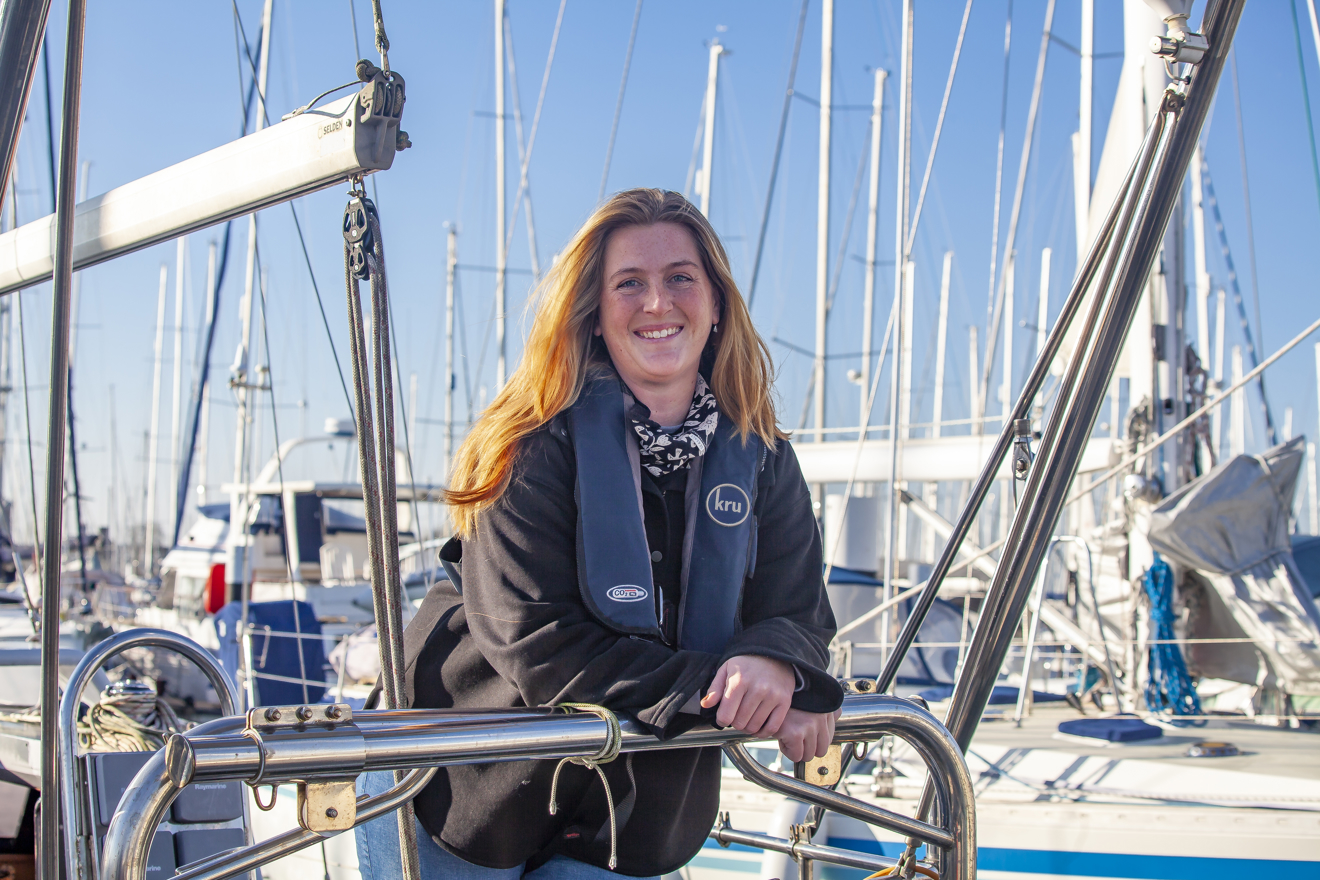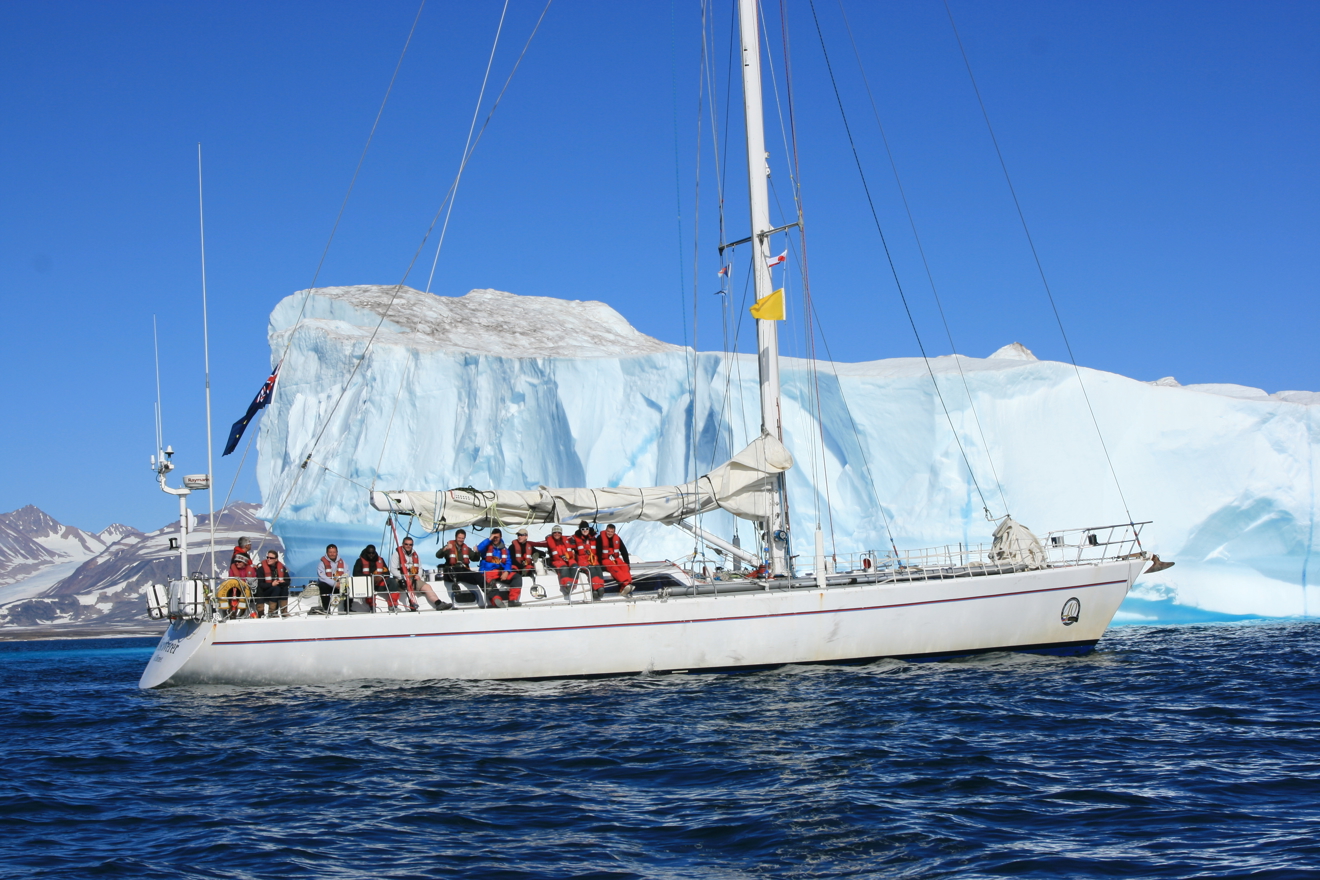Ella’s story: Survival of the arctic
Climate change is making a once unthinkable passage possible, prompting one young sailor to raise awareness of it, in the most awe-inspiring way
Ella Hibbert is running through the to-do list to ready her Bruce Roberts 38,Yeva , for the season. There's a new stern gland and propeller shaft to fit. The running and standing rigging needs to be replaced and the steel hull requires shot-blasting and anti-fouling. All that before we get to the interior.
As a new boating season begins, I expect many of us have similar lists. There's a major difference, however.Yeva's refit took place in January. While we were daydreaming about summer cruising, 27-year-old Ella was bashing into a frigid Solent alone. Notching up sea miles before an April shakedown cruise, chasing storms “to make sure anything we haven't thought about, that's not quite right, gets tweaked and sorted”. At the time of writing, if all has gone well Ella will slip lines at Haslar Marina, Gosport, in mid-to-late June and sail to Norway. Then she will attempt the first solo circumnavigation of the Arctic Circle.
Two world-firsts - going around non-stop and going around single-handed - weren't her original plan. In fact, you can describe this as a Northwest Passage cruise that got out of hand. Ella explains: “The more I looked into the ice-routing and weather-routing, I realised the decline of the ice meant it would be feasible to do an entire circumnavigation. I started to think, 'Why stop there?’. A circumnav' of the Arctic by myself non-stop is a testament to how rapidly the climate is changing. That's what we're going to prove.” This, then, isn't a record attempt. It's a wake-up call.
To end up as a climate campaigner is quite a journey for someone who worked as deckhand on motor superyachts. No fan of the lifestyle, Ella returned to sailing after four years. As a child, she sailed Optimist dinghies on a Suffolk reservoir and aboard her father's Moody in the Mediterranean. She qualified as an RYA Cruising Instructor before becoming the second-youngest female Yachtmaster Instructor, aged 25. Her Arctic expedition represents a sabbatical from her day job freelancing at sailing schools.

The Yachtmaster mindset
Navigational savvy instilled by her RYA training will be “fundamental to making it safely around the Arctic”, she says. There's more to the qualification than that, though: “I haven't got masses of offshore miles by myself yet, but my skill set from being an RYA Yachtmaster Instructor has given me the confidence to know I can look after myself out there.”
She'll need to. Even with a steel ketch (chosen and bought by Ella for its go-anywhere hull and a flexible sat plan which is manageable alone), despite new foam insulation and “at least two or three of almost everything - sails and spares”, Ella has a lot to contend with.
Apart from stops roughly every fortnight (without disembarking) to resupply food and fuel, she'll be on her own. Solar and wind power will top up batteries alongside the engine. No marina mechanic will make repairs. Not that being alone unduly concerns her.
“Probably the top two challenges will be the weather – storms, fog, lack of wind - and fatigue”
“As well as ice, areas like the north coast of Alaska are renowned for high seas and storms of up to 40-50 knots while the Northwest Passage is known for being foggy and having no wind,” she says. “Also, I'm not going to be able to sleep for six to eight hours a day.” On the plus side, constant daylight in an Arctic summer will ease watch-keeping.
The Arctic experience
Vaughan Marsh, RYA Chief Instructor for sail and motor cruising, notes how the Arctic places unique demands on sailor and boat alike. “There is that need to be absolutely self-sufficient,” he says. Before joining the RYA, he led expedition sail-training for the Armed Forces at the Joint Services Sail Training Centre, including trips from Iceland to Arctic Greenland.
There, he ran onboard heating near-continuously aboard a Challenge 67 yacht. With the watermaker working harder in cold water, he discovered there were greater demands on power. Alongside upcoming weather, passage plans were made after studying years of ice charts: “The Denmark Meteorology Institute provide a really good resource, with percentages of water to ice (actual and historic) by area.”

“Fog was a major consideration and within that lay icebergs, ice and large fragments of ice”
Vaughan says he spent considerable effort understanding how to use radar better. “We had reasonable visibility most of the time because it was daylight but there was ice everywhere, so when it was foggy, we used radar to find a route and had spotters out permanently. We had a course to steer but were often picking through ice floes. Without radar it would have been difficult.”
He recommends adjusting the length of watches according to outdoor temperature on passage - the colder it gets, the shorter they are - and investing in a one-piece suit “effectively with your socks sewn in” to stay dry and warm. He adds: “One tip was getting boots that people who work in refrigerated environments wear. People who bought those instead of standard sailing boots said they were a really good investment.”
While anchoring was no more taxing “than a nice day in the Solent” in the light winds he encountered, he advocates anchor watches, nevertheless. On-watch crew had extra-long boat hooks to fend off small ice, plus a dinghy ready to push away approaching ice fragments.
Above all, he says, prepare. “Beforehand we realised our standard drills to return to someone falling overboard were pretty slick but there had to be less faffing around getting them out of the water. The amount of time someone can survive is significantly reduced in water that's zero degrees. When I put a timer on it, that concentrated the mind.”
Think ahead. Minimise risk. Know the drill. All central to a Yachtmaster Instructor's mindset. It reminds me of a quote by Roald Amundsen when asked about the adventure of his polar expeditions: “Adventure is just bad planning.”
Solo challenge
Of course, Ella won't have the luxury of crew. For her there's just a UK shore team: her dad, a former British Army helicopter pilot, handling weather-routing and her mum, managing social media.
She estimates between five and six months to complete the clockwise trip - a start point west of Norway then Iceland, Greenland, the Northwest Passage, Alaska, Russia, northern Norway - and return to Gosport. “I'm hoping it won't be quite that long. In areas of open water I can push the boat to six, seven knots. In pack ice we could be as slow as half a knot.”
She adds: “I'm sure there will be moments where I get frightened and think ‘Why did I put myself through this?’ but part of the challenge - being out there by myself - is what I'm most excited about. I'm looking forward to putting myself through those challenges and coming out the other side.”
Perhaps that's why Ella has reached out to Kirsten Neuschäfer, winner of the 2022 Golden Globe solo circumnavigation race, and has been picking the brains of Arctic specialists such as Bob Shepton and YouTuber Eric Aanderaa. “They think it's slightly insane”, she admits.
“Everyone has been supportive but there's the knowledge this hasn't been done before.”
Ella points out her attempt is only possible because of the climate emergency. “Some scientists are estimating the Arctic could be ice-free in summer as early as 2045, which means before I'm 50 we could sail from Scotland to China across the top of the world. The more accessible it becomes; the more traffic moves into the area and the more the problem escalates.”
For her the adventure - even the record - is beside the point. “I don't feel people are getting the knowledge about how intricately linked we are to the survival of the Arctic. If we let the ice continue to deplete at the current rate, not only will it be devastating for the Arctic environment and wildlife and inhabitants, but for us too.

“This is very much about trying to raise awareness of how much better we need to be doing. Obviously, I'm inspired by previous Arctic sailing expeditions, but it will be bittersweet to pull this off.”
A headache for Ella when we spoke was not marine-related at all - securing permission to dock in Russia is not easy. If all goes to plan, she will return to the Solent in October. The boat will be sold, and its proceeds donated to the charities Polar Bears International and Ocean Conservancy.
So, does anything keep her awake in the small hours? Only that 'to-do’ list. “What keeps me motivated, though, is the thought of the day when the boat's ready and the feeling of slipping lines.”
The climate needs more people like Ella. We all do. Follow Ella's progress and make a donation to the charities mentioned.
Our interview with Ella was first published in the spring 2024 edition of RYA magazine.
